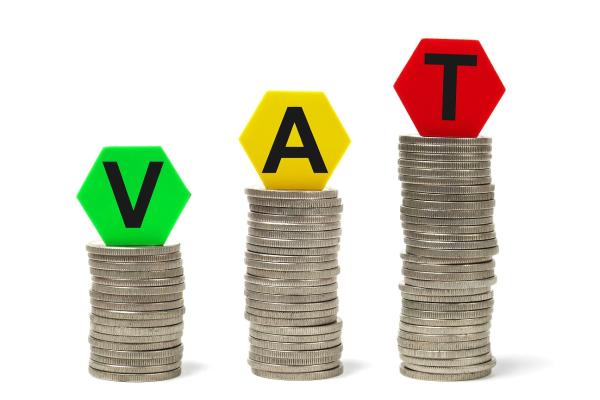
Press release: Smooth transition to VAT registration, say tax bodies
The Association of Taxation Technicians (ATT) and The Chartered Institute of Taxation (CIOT) would be concerned at any move to reduce the £85,000 VAT threshold without additional help for businesses to smooth their transition to becoming VAT registered.
The tax organisations have responded to a Treasury call for evidence on whether the design of the VAT threshold could better incentivise the growth of businesses. The Office of Tax Simplification (OTS) in its review of VAT published last year recommended that the Government examine the current approach to the VAT threshold. The VAT threshold effectively exempts businesses from VAT, at a significant cost to the Exchequer.2
A joint survey of ATT and CIOT members gathered evidence to inform the organisations’ separate responses to the Treasury. Around 60 per cent of respondees gave their number one reason for small businesses managing the VAT registration threshold as being due to price pressure from non-VAT registered competitors.
Alan McLintock, Chair of CIOT’s Indirect Taxes Subcommittee, said:
“The high VAT threshold is a vital simplification measure for small businesses.
“The primary reason that many businesses manage turnover to remain under the VAT registration threshold is the fear that their non VAT registered competitors will undercut them. For example, a non-VAT registered decorator can submit a decorating quote for £2,000 but the VAT registered equivalent would need to charge £2,400 inclusive of VAT. This scenario applies especially in service industries where the key cost element is labour, so there is little VAT on purchases to be recovered
“Having some financial smoothing mechanism to address the ‘cliff edge’ when a business’ turnover exceeds the £85,000 threshold, and which is administratively simple, is key to addressing this issue.”
A smoothing may be achieved by a graduated VAT cost for a growing small business for those impacted by the financial burden; using the above decorating scenario as an example, whilst 20 per cent VAT would be charged, the decorator would only need to pay half of the VAT over to HMRC. This would mean that he could adjust his price and be more competitive with his unregistered competition.
A total of 74 per cent of respondents to the survey thought that Making Tax Digital for VAT due to start next April was a further reason for small businesses to want to remain below the VAT threshold because most respondents thought it would increase the administrative burdens on business.3
It also became clear from members’ experiences that VAT registration was just one of the many challenges to growing a business.
Alan McLintock said:
“The VAT registration threshold must be seen as only one of several factors why turnover may be managed, for example the additional tax/legal complexities and costs around taking on an employee can be a major factor for refraining from growth for an owner managed business."
HMRC statistics show that approximately 150,000 businesses traded in the turnover bracket of £70,000 to £80,000 (£1,000 to £10,000 under the VAT registration threshold) in 2014/15. This is a comparatively small number of businesses in the UK population compared to the 5.7 million private sector businesses recorded at the start of 2017.
Michael Steed, Co-chair of ATT’s Technical Steering Group, said:
“It should not be assumed that a substantial reduction in the VAT threshold so that these businesses had to charge VAT would mean that they will all turn into business empires. Many small businesses have no intention of growing into large companies. They are set-up primarily to provide their owners with sufficient income to support them and their families.
“We would stress the need to keep any new measures as simple as possible in order to avoid introducing any extra unnecessary complexity into an already complicated VAT system. Indeed, our members have already identified the complexity of VAT as a factor in businesses wishing to stay below the threshold. One possibility, set out in the ATT’s response, may be to revisit recent changes to the existing VAT Flat Rate Scheme and amend these so that they target avoidance activity more precisely, without limiting the benefits of the scheme and introducing unwelcome complexity for compliant small businesses.”4
Notes to editors
- In 2017/2018 it is forecast to cost £2.1 billion.
- The ATT and CIOT jointly invited members to respond to a survey based on the questions posed by the Call. In total 429 responses were received. Of those responding, 355 (83 per cent) were agents, 25 are unregistered businesses (6%); 26 businesses registered for VAT (6%); and the remaining 23 respondents (5%) are mainly tax advisers who had not described themselves as agents, tax professionals that were retired and charity trustees.
- The flat rate scheme (FRS) is a simplification scheme available to businesses with VAT turnover of £150,000 or less. Instead of requiring businesses to analyse the VAT the have paid on supplies and charged to customers in detail, the FRS allows businesses to pay a fixed percentage ‘flat rate’ of their turnover to HMRC as VAT. The VAT flat rate used usually depends on the business type.
Recent changes to the FRS, in particular the introduction of the limited cost trader rules in April 2017, have made the flat rate scheme less attractive to small businesses. The limited cost trader rules were introduced to tackle abuse of the flat rate scheme but the new rules apply much more widely. They are complex in nature, causing many businesses who were not acting in an abusive manner to revert to traditional VAT accounting with the extra administrative burdens this brings.















